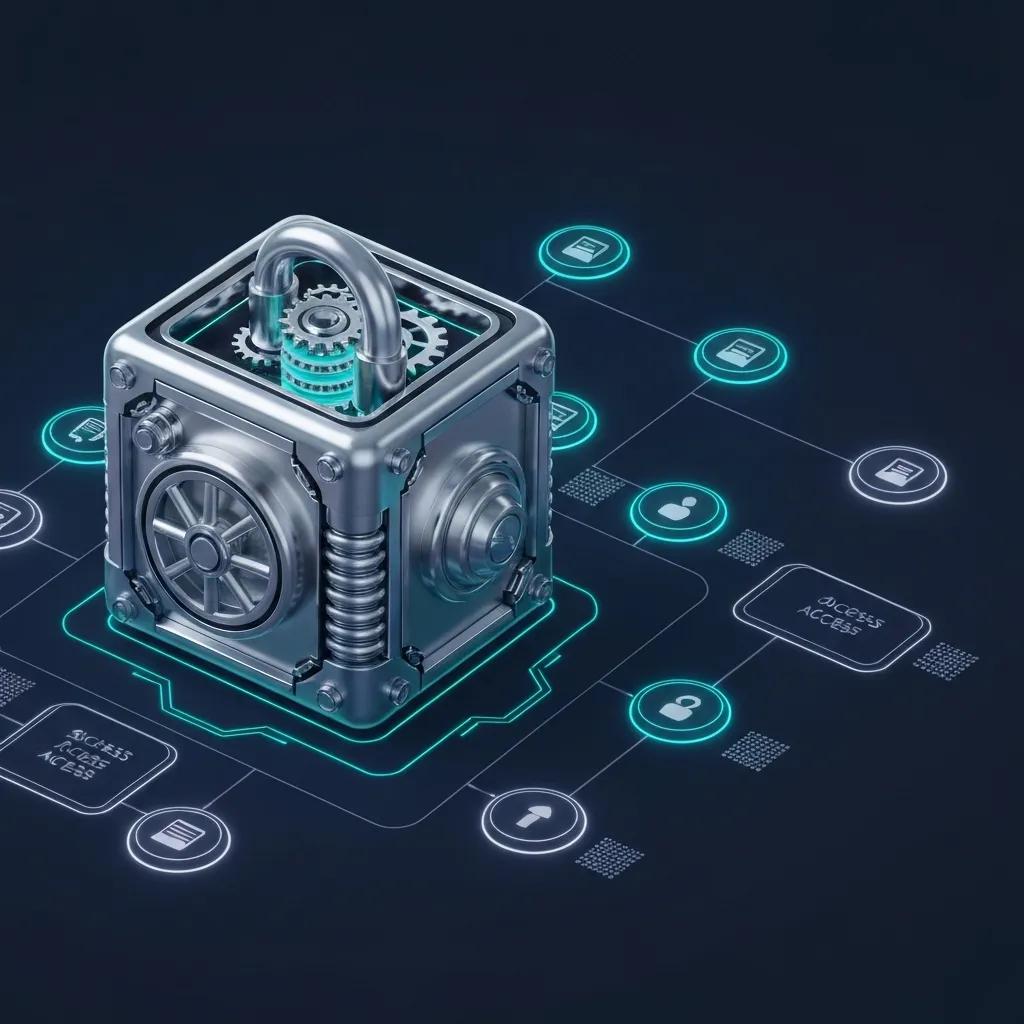Comprehensive Cyber Technology Guide: Cybersecurity Solutions, Threat Intelligence, and Future Trends
Every moment, adversaries probe network perimeters and exploit application flaws, making cyber technology indispensable for safeguarding digital assets. This guide maps the essential cybersecurity solutions, emerging information security trends, threat intelligence frameworks, risk management practices, data privacy and compliance requirements, future innovations, and actionable best practices that fortify defenses and ensure operational resilience. By understanding how modern cyber technology integrates AI-driven threat detection, managed security services, and Zero Trust principles, organizations can build a holistic security ecosystem tuned to evolving risks.
In the sections that follow, you will discover:
- What cybersecurity solutions protect digital assets and their foundational types
- The latest information security trends shaping defense strategies
- How threat intelligence platforms collect and apply adversary insights
- Fundamental risk management practices for resilient operations
- Data privacy laws, prevention technologies, and response procedures
- Future directions in quantum-safe cryptography, blockchain, and state-sponsored threat evolution
- Best practices for individuals and teams to implement and stay current with cybersecurity
What Are Cybersecurity Solutions and How Do They Protect Digital Assets?
Cybersecurity solutions encompass technologies and services that identify vulnerabilities, prevent intrusions, and remediate incidents to defend networks, endpoints, applications, and data integrity. By combining firewalls, intrusion prevention systems, endpoint protection, and encryption protocols, organizations establish layered defenses that detect anomalies in real time and minimize breach impact. Leading providers supplement these tools with managed security services to deliver continuous monitoring and incident response support.
National Institute of Standards and Technology (NIST), Cybersecurity Framework (2018)
Cybersecurity Solutions and Defense Strategies
Cybersecurity solutions are essential for protecting digital assets by identifying vulnerabilities, preventing intrusions, and remediating incidents. These solutions combine firewalls, intrusion prevention systems, endpoint protection, and encryption protocols to establish layered defenses that detect anomalies in real time and minimize breach impact. Leading providers supplement these tools with managed security services to deliver continuous monitoring and incident response support.
This framework provides a comprehensive guide to cybersecurity solutions and their role in protecting digital assets, aligning with the article’s discussion of essential cybersecurity measures.
What Types of Cybersecurity Solutions Are Essential Today?
Organizations rely on a core set of solutions to secure their expanding digital footprint:
- Endpoint Protection Platforms ensure device integrity by scanning for malware and unauthorized changes.
- Network Security Controls such as firewalls and intrusion detection systems filter malicious traffic at perimeter and internal segments.
- Cloud Security Solutions enforce identity, encryption, and posture management in SaaS, PaaS, and IaaS environments.
- Identity and Access Management (IAM) governs authentication, authorization, and privilege assignment to prevent unauthorized access.
These essential solutions create a unified defense posture that reduces exposure to common attack vectors and sets the stage for advanced AI-driven threat detection.
How Do AI and Machine Learning Enhance Cyber Defense Strategies?

AI and machine learning amplify defense capabilities by analyzing vast data streams to uncover behavioral anomalies and predict emerging threats before exploitation occurs. They ingest logs, network flows, and user activity to build models that differentiate normal operations from malicious patterns. This predictive detection reduces dwell time, automatically quarantines suspicious processes, and adapts policies based on evolving attacker tactics, driving more proactive security.
What Role Do Managed Security Services Play in Cyber Technology?
Managed Security Services deliver expert-driven resilience through continuous 24/7 monitoring, threat hunting, and rapid incident response coordination. Expert teams analyze alerts, escalate critical events, and guide remediation to restore normal operations swiftly. These services free internal resources, enforce compliance best practices, and integrate proprietary threat intelligence feeds, ensuring that defense strategies remain effective against shifting adversary techniques.
How Can Organizations Implement Zero Trust Architecture Effectively?

Zero Trust Architecture enforces strict identity verification and least-privilege access for all resources, eliminating implicit trust even within network boundaries. Effective implementation follows these steps:
- Define the Protect Surface by identifying critical assets and data flows.
- Segment Networks and Workloads to contain lateral movement.
- Enforce Continuous Authentication using multi-factor authentication and adaptive risk scoring.
- Implement Policy Enforcement Points at application, network, and endpoint layers.
- Monitor and Validate every access request in real time based on user, device, and behavior context.
Zero Trust Architecture, U.S. Cybersecurity and Infrastructure Security Agency (CISA) (2022)
Zero Trust Architecture Implementation
Implementing a Zero Trust Architecture involves defining the protect surface, segmenting networks, enforcing continuous authentication, implementing policy enforcement points, and monitoring and validating every access request in real time. This approach reduces attack surfaces and strengthens breach containment, forming a foundation for resilient cyber technology.
This source provides a detailed guide on implementing Zero Trust Architecture, which directly supports the article’s section on Zero Trust principles.
Adopting Zero Trust principles reduces attack surfaces and strengthens breach containment, setting the foundation for resilient cyber technology.
What Are the Latest Information Security Trends Shaping Cyber Technology?
Emerging information security trends reflect how new attack methods and defense innovations redefine protection strategies across industries. Organizations confronting AI-powered threats, expanding cloud footprints, IoT vulnerabilities, and talent shortages must adapt frameworks and technologies to maintain security posture and regulatory compliance.
How Are AI-Powered Threats and Defenses Evolving in 2024?
AI-powered threats now leverage generative models to craft highly personalized phishing emails and deepfake videos for social engineering, while AI-driven defenses employ real-time anomaly detection, behavioral biometrics, and automated response orchestration to neutralize sophisticated impersonation and malware campaigns. This dynamic interplay of offensive and defensive AI accelerates an arms race that demands continuous innovation in detection and mitigation.
Why Is Cloud Security Growing Rapidly and What Are Its Challenges?
Cloud security scales rapidly with the surge in remote work and digital transformation, prompting new models for data encryption, identity controls, and compliance automation. Key challenges include misconfigured storage buckets, fragmented identity management across multi-cloud environments, and evolving data residency regulations. Addressing these requires unified Cloud Security Posture Management and continuous compliance monitoring.
What Emerging Threats Are Impacting IoT and SaaS Environments?
Exponential growth of IoT devices and SaaS applications introduces attack surfaces such as unsecured firmware, default credentials, API vulnerabilities, and identity breaches. Exploited devices can serve as entry points for lateral movement, while compromised SaaS accounts may grant extensive data access. Strengthening device authentication, patch management, and SaaS security posture are critical to mitigating these emerging threats.
How Is the Cybersecurity Skills Shortage Affecting Industry Growth?
A widespread shortage of skilled professionals—nearly 470,000 U.S.-based openings in 2023–2024—limits organizations’ ability to implement and manage advanced cyber technology. This talent gap drives increased reliance on automation, managed services, and cross-training programs to fill critical roles in security operations, threat intelligence, and compliance, reshaping career paths and educational priorities.
How Does Cyber Threat Intelligence Improve Cyber Defense Strategies?
Cyber threat intelligence consolidates data on adversary tactics, techniques, and procedures (TTPs) to inform proactive defense planning and accelerate incident response. By turning raw feeds from logs, open-source research, and commercial providers into actionable insights, teams can anticipate attack campaigns, prioritize high-risk vulnerabilities, and refine detection rules for faster mitigation.
What Are the Key Components of Effective Threat Intelligence Platforms?
| Capability | Role | Benefit |
|---|---|---|
| Data Collection | Aggregates logs, network feeds | Broad visibility across environments |
| Threat Analysis | Enriches and scores indicators | Prioritizes critical threats |
| Collaboration & Sharing | Facilitates intel exchange | Accelerates community defense |
| Automated Workflows | Orchestrates alert enrichment | Improves incident response speed |
How Can Organizations Use Threat Intelligence to Prevent Ransomware and Phishing?
Organizations leverage threat intelligence to map malicious infrastructure, block known phishing domains, and deploy indicators of compromise (IOCs) at email gateways and firewalls. Enriched alerts help security teams quickly identify attack patterns, isolate impacted hosts, and update policies that prevent ransomware encryption and phishing workflow success, reducing incident frequency and business disruption.
What Are Best Practices for Integrating Threat Intelligence into Security Operations?
Effective integration of threat intelligence involves:
- Aligning intelligence feeds with security information and event management (SIEM) rules
- Conducting regular intelligence-driven threat hunting exercises
- Establishing closed-loop feedback between analysts and response teams
- Automating enrichment of alerts with reputation and TTP context
These practices ensure that threat intelligence informs every stage of detection, investigation, and remediation.
What Are the Fundamental Cyber Risk Management Practices in Cyber Technology?
Cyber risk management encompasses systematic identification, evaluation, and treatment of digital risks to preserve business continuity and strategic objectives. A robust framework combines risk assessments, continuity planning, insurance, and supply chain oversight to maintain resilience in the face of evolving threats.
How Is Cybersecurity Risk Assessment Conducted?
Cybersecurity risk assessment evaluates the likelihood and impact of potential threats through these steps:
- Asset Inventory to catalog critical systems and data.
- Threat Modeling to identify adversary capabilities and attack vectors.
- Vulnerability Analysis using scans and penetration tests.
- Risk Prioritization based on business impact and exploit feasibility.
This structured process guides resource allocation toward the most critical security controls.
What Are Business Continuity and Disaster Recovery Strategies?
Business continuity and disaster recovery strategies define processes and backup solutions that enable rapid restoration of systems and data:
- Continuity Plans outline roles, communication channels, and alternate work sites.
- Backup and Recovery Solutions ensure data snapshots and failover capabilities.
- Regular Testing validates plan effectiveness.
Coordinating these elements ensures that operations resume quickly after incidents.
How Does Cyber Insurance Support Risk Mitigation?
Cyber insurance transfers residual financial risk by covering breach notification costs, legal fees, forensic investigations, and system recovery. Policies often require compliance with baseline security controls, incentivizing organizations to maintain robust cyber technology measures and minimize claim exposure.
Why Is Supply Chain Security Critical in Cyber Technology?
Supply chain security addresses third-party risk by enforcing vendor assessments, contract requirements, and ongoing monitoring of supplier environments. Ensuring that partners comply with security standards prevents downstream compromises that could undermine critical digital operations.
How Can Organizations Ensure Data Privacy and Compliance in Cyber Technology?
Data privacy and compliance ensure adherence to legal frameworks and protection of personal information from unauthorized access, helping avoid regulatory penalties and reputational damage. Implementing robust controls and response procedures aligns security efforts with global and industry-specific requirements.
What Are the Key Data Protection Laws Affecting Cybersecurity?
- GDPR enforces data subject rights and breach notification within 72 hours.
- CCPA grants consumer access and deletion rights for personal information.
- ISO 27001 specifies an information security management system framework.
How Do Data Loss Prevention and Privacy-Enhancing Technologies Work?
Data Loss Prevention (DLP) solutions monitor and control data flows to detect unauthorized transfers of sensitive information. Privacy-Enhancing Technologies such as tokenization, anonymization, and homomorphic encryption minimize exposure by masking or protecting data during processing, storage, and analytics.
What Are Effective Incident Response and Breach Notification Procedures?
Effective incident response and breach notification procedures define clear roles, communication protocols, and legal requirements to:
- Contain incidents rapidly
- Investigate root causes
- Notify regulators and affected individuals per jurisdictional timelines
These structured processes limit damage and demonstrate compliance with data protection laws.
What Are the Future Directions and Innovations in Cyber Technology?
Future innovations in cyber technology will reshape defense strategies by harnessing quantum computing, blockchain, and advanced geopolitical threat analysis to address evolving vulnerabilities. Organizations that anticipate these shifts can adopt emerging solutions to stay ahead of sophisticated adversaries.
How Will Quantum Computing Impact Cybersecurity and Cryptography?
Quantum computing threatens current encryption algorithms by solving complex mathematical problems at unprecedented speeds, prompting the development of quantum-resistant cryptographic standards. Post-quantum algorithms will safeguard confidentiality even as quantum processors scale in capability.
What Is the Role of Blockchain in Enhancing Cyber Defense?
Blockchain enhances cyber defense by providing immutable transaction records, decentralized identity management, and tamper-proof audit trails. These properties strengthen trust, simplify compliance reporting, and reduce single points of failure in critical processes.
How Are Cyberwarfare and State-Sponsored Threats Evolving?
State-sponsored actors employ advanced persistent threats (APTs) and supply chain infiltration to achieve long-term espionage and disruption objectives. These campaigns leverage zero-day exploits and custom malware, driving the need for cross-border collaboration, threat attribution, and enhanced intelligence sharing.
What Are the Market Growth Projections and Industry Trends for Cyber Technology?
| Market Segment | 2025 Forecast (USD Bn) | CAGR (%) |
|---|---|---|
| Endpoint Security | 45.3 | 12.1 |
| Cloud Security | 32.7 | 15.8 |
| Threat Intelligence | 8.9 | 13.4 |
| Managed Services | 60.2 | 14.0 |
How Can Individuals and Organizations Implement Best Practices in Cybersecurity?
Implementing best practices in cybersecurity empowers users and teams to apply controls consistently, reduce human error, and build a cohesive security ecosystem that adapts to new threats. Combining foundational measures with continuous learning ensures long-term protection.
What Basic Security Measures Should Everyone Use?
- Enable firewalls to filter incoming and outgoing network traffic.
- Install and update antivirus software to detect and remove malware.
- Require multi-factor authentication for privileged and remote access.
- Apply regular software updates and patch management to close vulnerabilities.
How to Protect Against Common Cyberattacks Like Phishing and Ransomware?
- Conduct regular training on recognizing suspicious emails and links.
- Deploy advanced email filtering and URL scanning.
- Maintain offline backups and test restoration processes.
- Implement network segmentation to contain malware spread.
What Are the Steps to Build a Holistic Security Ecosystem?
Building a holistic security ecosystem involves:
- Integrating network, endpoint, and cloud protection tools under unified management.
- Centralizing logging and monitoring through SIEM or extended detection and response (XDR) platforms.
- Automating policy enforcement and compliance checks.
- Establishing cross-functional communication between IT, security, and business units.
How to Stay Updated on Cybersecurity Threats and Solutions?
Staying current with cybersecurity threats and solutions relies on:
- Subscribing to reputable threat intelligence feeds and advisories.
- Participating in industry forums, workshops, and conferences.
- Engaging in continuous training and certification programs.
- Monitoring security news outlets and vulnerability databases.
As cyber threats evolve and digital complexity grows, mastering cyber technology’s full spectrum—from foundational security controls to advanced threat intelligence and next-generation innovations—becomes essential. By applying the strategies outlined here, organizations and individuals can strengthen defenses, maintain regulatory compliance, and prepare for emerging challenges in an ever-changing digital landscape.



